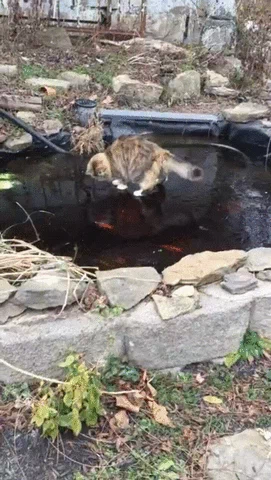DEM Stocking
Trout Now for Winter Fishing Season
 The
Rhode Island Department of Environmental Management (DEM) is stocking ponds
across Rhode Island this week with several thousand brook and rainbow trout for
the winter trout fishing season.
The
Rhode Island Department of Environmental Management (DEM) is stocking ponds
across Rhode Island this week with several thousand brook and rainbow trout for
the winter trout fishing season.
The one to
one-and-a-half-pound, hatchery-raised trout will be stocked in the following
waterways:
• Meadowbrook
Pond, Richmond
• Silver Spring Pond, North Kingstown
• Big Round Top Pond, Burrillville
• Upper Melville Pond, Portsmouth
• Silver Spring Pond, North Kingstown
• Big Round Top Pond, Burrillville
• Upper Melville Pond, Portsmouth
"I hope
anglers of all ages will take time this winter to venture out to a favorite
fishing spot to reel in these beautiful, hatchery-raised trout," said DEM
Director Janet Coit.
"Fishing is a popular winter activity for people of all ages in Rhode Island and a great way to connect with the outdoors, unwind, and create memories with family and friends. Grab your fishing gear and head out to one of these prime fishing locations!"
"Fishing is a popular winter activity for people of all ages in Rhode Island and a great way to connect with the outdoors, unwind, and create memories with family and friends. Grab your fishing gear and head out to one of these prime fishing locations!"
A current fishing license and a Trout Conservation Stamp are required to keep or possess a trout. The daily creel and possession limit for trout is two from December 1, 2018, through February 28, 2019.
DEM advises
anglers to check with individual communities about safe ice conditions on local
ponds before ice fishing; DEM does not monitor ice conditions in local
communities.
Ice must have a uniform thickness of at least six inches before it is considered safe by DEM. It generally takes at least five to seven consecutive days of temperatures in the low 20s and is determined by a number of factors such as the size and depth of a pond, presence of springs or currents, and local temperature fluctuations.
For ice conditions at Olney Pond at Lincoln Woods State Park, call DEM's 24-hour ice safety hotline at 667-6222.
View DEM's ice safety guide online at www.riparks.com/IceSafe for safety tips, information on ice strength, and guidance on what to do if a person were to fall through the ice.
The first safety tip: never assume the ice is safe. Among the others: never fish or skate alone or on an untested lake or pond; never use the ice for a shortcut; and never go out onto the ice after an animal or a toy.
Ice must have a uniform thickness of at least six inches before it is considered safe by DEM. It generally takes at least five to seven consecutive days of temperatures in the low 20s and is determined by a number of factors such as the size and depth of a pond, presence of springs or currents, and local temperature fluctuations.
For ice conditions at Olney Pond at Lincoln Woods State Park, call DEM's 24-hour ice safety hotline at 667-6222.
View DEM's ice safety guide online at www.riparks.com/IceSafe for safety tips, information on ice strength, and guidance on what to do if a person were to fall through the ice.
The first safety tip: never assume the ice is safe. Among the others: never fish or skate alone or on an untested lake or pond; never use the ice for a shortcut; and never go out onto the ice after an animal or a toy.
Anglers are
reminded to protect themselves from hypothermia. When outdoors, especially in
low temperatures, dress in layers and wear a warm hat and gloves.
Hypothermia is caused by exposure to cold weather, wind, rain, or submersion in cold water. It can set in when the body core temperature reaches 95 degrees Fahrenheit and is marked by shivering, dizziness, trouble speaking, lack of coordination, confusion, faster heartbeat, and shallow breathing.
It is important to look for these symptoms in children and the elderly who may not be focused on this hazard. If hypothermia is suspected, call for help immediately. Move the victim to a warm environment, remove wet clothing, and cover them with warm layers of clothing or blankets.
Hypothermia is caused by exposure to cold weather, wind, rain, or submersion in cold water. It can set in when the body core temperature reaches 95 degrees Fahrenheit and is marked by shivering, dizziness, trouble speaking, lack of coordination, confusion, faster heartbeat, and shallow breathing.
It is important to look for these symptoms in children and the elderly who may not be focused on this hazard. If hypothermia is suspected, call for help immediately. Move the victim to a warm environment, remove wet clothing, and cover them with warm layers of clothing or blankets.
For daily
updates on stocking locations, follow DEM's outdoor education page on Facebook:
https://www.facebook.com/RIFishwildlife/, or call 401-789-0281.
Follow DEM on
Twitter (@RhodeIslandDEM) or Facebook at www.facebook.com/RhodeIslandDEM for
timely updates.
Related links